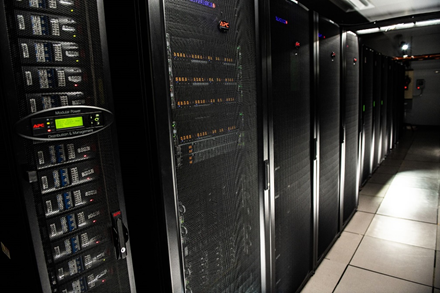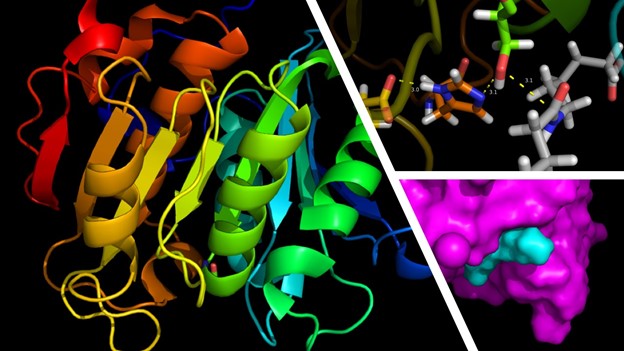Computing, Analytics, and Modeling
Investigating Soils Through Simulations and Modeling
EMSL’s computational resources help make sense of soil, organic, and biological data

Researchers at EMSL leverage computational power to characterize soils and organic and biological matter. (Composite image by Nathan Johnson | Pacific Northwest National Laboratory)
Soils contain a rich mixture of living organisms, organic matter, and minerals, among other things. Healthy soils provide nourishment to crops and plays an important role in the carbon cycle.
The Environmental Molecular Sciences Laboratory (EMSL), a Department of Energy Office of Science user facility located at Pacific Northwest National Laboratory, houses many advanced instruments for mass spectrometry and spectroscopy to study soil composition. Now, in a newly-developed capability, users can leverage EMSL’s computational resources to get the most out of their data.
In an upcoming webinar, Computational Scientist Margaret Cheung will introduce this new capability and demonstrate how EMSL’s computing resources can advance users' discovery in science by simulations and modeling.
“Soils can contain healthy or unhealthy chemical compounds,” said Cheung. “Microbes in soils can be exposed to chemicals like toxins. Every microbe tells a story about soils they live in. We help scientists learn that story through modeling.”
Computational scientists Amity Andersen and Daniel Mejía-Rodríguez will join Cheung for the webinar at 12 p.m. Pacific daylight time on Wednesday, June 29thto discuss how computational tools can supplement research using a case study.

Diverse Computational Expertise
EMSL’s staff features a diverse array of computational experts. Andersen’s work focuses on molecular interactions in soil. “Biological and organic molecules can interact with each other, or with mineral interfaces,” said Andersen. “Complexation of biological and organic molecules with certain types of metals can aggregate soil bio-organic matter and transform their physical and chemical properties.”
Andersen investigates the types of metal-bio-organic complexes possible in soil by generating simulated spectra for techniques like X-ray absorption spectroscopy and using these simulations to help interpret experimental data. “The combination of experimental and theoretical techniques can give us a molecular view of the soil,” said Andersen.
Mejía-Rodríguez also simulates spectra, using the EMSL-developed computational chemistry software NWChem for his work. Mejía-Rodríguez sees his results as a way to provide guidance for EMSL users.
“If a scientist wants to modify an enzyme to make reactions, such as breaking down pollutants, faster, we can simulate these modifications and see their effects on the reaction pathway,” said Mejía-Rodríguez.
Marat Valiev, one of the original members of the NWChem development team, is an expert in integrating quantum and classical methods. This mitigates the expense of otherwise expensive chemistry calculations and allows them to be used for problems such as enzyme catalysis.
“Only the chemically active site of the enzyme needs to be characterized at the quantum mechanical level,” said Valiev. “The rest of the system being inert can be treated like a ball and spring model without sacrificing accuracy.”
This critical capability bears relevance across a variety of projects relevant to the mission of the Department of Energy's Biological and Environmental Research program. Among those is a joint project with Battelle Memorial Institute on the rational design of enzymatic systems for plastic degradation, the computational component of which Valiev is leading in collaboration with Cheung and Mejía-Rodríguez.

Utilizing EMSL’s Computational Resources
Researchers who wish to use EMSL resources need to submit a proposal through the NEXUS user portal. One of Cheung’s goals for this webinar is to teach EMSL users how to request computational resources through the portal.
“This is a new capability that EMSL is offering,” said Cheung. “Users who want to take advantage of this capability will need to submit a request for computational resources to their proposal in the NEXUS system.”
Learn more about EMSL’s computational resources at the EMSL LEARN Webinar Series presentation, Characterization and Modification of Soils, Organic and Biological Matter on June 29th.

